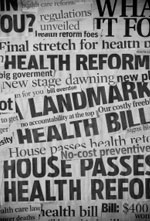Publication
Article
Psychiatric Times
Update on Mental Health Benefits and Substance Use Disorder Services Under the Affordable Care Act
Author(s):
Come next year, psychiatrists will start seeing patients who have purchased new individual and small-group health plans on the state exchanges mandated by the Affordable Care Act.

Come next year, psychiatrists will start seeing patients who have purchased new individual and small-group health plans on the state exchanges mandated by the Affordable Care Act. But mental health benefits will differ from state to state, and it is hard to know whether they will meet the requirements of the Mental Health Parity and Addiction Equity Act of 2008 (MHPAEA). Moreover, important issues such as network adequacy as far as psychiatrist coverage is concerned and physician payment rates are also up in the air.
Julie Clements, JD, MPP, Deputy Director of Regulatory Affairs at the American Psychiatric Association, recently conducted a webinar for psychiatrists. She told Psychiatric Times, “A lot of them don’t yet realize how big an issue this is. They are just beginning to understand that the state exchanges will offer private plans and subsidies for individuals of up to 400% of the poverty rate. So this could mean 60 million to 70 million people impacted.”
The Department of Health and Human Services (HHS) issued a final rule on February 25, 2013, that outlines the essential health benefits (EHBs) that all qualified health plans (QHPs) on each state exchange must cover. Those EHBs fall into 10 categories. Two are of prime importance to psychiatric patients: mental health and substance use disorder services, including behavioral health treatment, and prescription drugs.
Almost all 50 states and the District of Columbia have chosen “benchmark plans,” which set minimum levels of benefits for QHPs in each of the 10 EHB categories. The EHB rule is very general with regard to the mental health category and does not address how the MHPAEA affects those minimums.
Clements explains that most states have chosen the largest small-group plan in their state as their benchmark. These typically have less generous mental health benefits than private employer plans. California, for example, has chosen the Kaiser Small Group HMO 30 plan as its benchmark. “Many stakeholders in California have grave concerns over Kaiser’s minimal mental health services,” reports Jane Adcock, Executive Officer, California Mental Health Planning Council. “Recently, Kaiser was found to be out of compliance with access and availability rules and is in a corrective action plan mode.”
States do have the option of supplementing mental health or any other category of benefits within the benchmark plans. But they will not get federal financial assistance to do so, which decreases the likelihood that supplementation will occur, according to Clements. “NASMHPD is learning that states’ approaches to supplementing benefits or substitution are diverse,” explains, Joel E. Miller, Senior Director of Policy and Healthcare Reform, National Association of State Mental Health Program Directors (NASMHPD). “NASMHPD is concerned that this flexibility could affect mental health consumers’ ability to make apples-to-apples comparisons among plans and allow plans to use benefit design to cherry-pick healthier enrollees.”
Minimum mental health coverage in the mental health category theoretically should be affected once the HHS publishes a long-delayed final rule on the MHPAEA. That law-also known as the Wellstone-Domenici Mental Health Parity Act-says that all insurance plans must equalize access for patients with mental health issues with access for medical/surgical patients, and provide equal payment for all physicians billing the same codes (eg, evaluation and management codes).
In a letter to the HHS on March 13, 2013, the American Psychiatric Association voiced concern that states would judge network adequacy for psychiatrists included in QHP networks on the basis of the number of psychiatrists in a network, as opposed to the number of days it takes for a patient to get an appointment with a psychiatrist.
Patient access to medications is also an issue. The HHS declined to order formularies in QHPs to adhere to the Medicare Part D requirement that all drugs in 6 “protected” categories be available. Those 6 include antidepressants and antipsychotics. QHPs will have to offer at least the greater of the following:
• One drug in every United States Pharmacopeia category and class
or
• The same number of prescription drugs in each category and class as the state EHB benchmark plan
Patients who want an off-formulary drug will be able to file an appeal for it.
“It’s nice to say that people who need a drug that’s not on the formulary can appeal for it, but typically appeals are a lengthy and burdensome process, and this will be a difficult process for many mentally ill patients who seek a medically necessary but not covered drug,” responds Clements. “The drug benefit is still very limiting. Most very sick mental health patients need drugs from at least 3 different classes within the drug formulary.”
Newsletter
Receive trusted psychiatric news, expert analysis, and clinical insights — subscribe today to support your practice and your patients.





